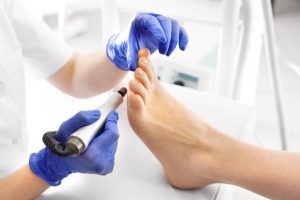Podiatry Education – What Do You Need to Become a Podiatrist?
Podiatry is a field of medicine that focuses on lower extremity disorders. These doctors diagnose the causes and treat patients through diagnosis, prescription of medications, physical therapy, and surgery. These physicians work in close collaboration with other health care providers, including nurses, pharmacists, and physical therapists. A variety of factors go into the education of these doctors. The scope of practice and education requirements are outlined in this article.
Qualifications to become a podiatrist
If you are considering a career as a podiatrist, you’ll first need to complete a degree or other relevant training. You can also become a qualified podiatrist by doing a degree apprenticeship with a health care provider. Apprenticeships are a flexible way to learn more about the profession while gaining valuable work experience. You’ll also have to complete continuing professional development or CPD activities required by the HCPC. In addition to this, you’ll need to pass a state exam every year.
The next step is completing a residency program. The DPM program is a three-year program that requires approximately 36 months of clinical work. During the residency program, you will also be required to take part in a national exam known as the American Podiatric Medical Licensing Examination (APME), which consists of four parts. You can also specialise in orthopedics, pediatrics, sports, wound care, and surgery. Consult The SA Podiatry Clinic podiatry.
Generally, a podiatrist will begin their career by working in general clinics. As you gain experience and expertise, you can decide to specialise in one area. For instance, you could specialise in rheumatology, diabetes, or other areas of high-risk patient management. You could also specialise in pediatric podiatry or do research in a research lab. Or, you could do academic research at a university and work in a hospital.
A podiatrist will need a bachelor’s degree in a field related to medicine, such as biology, chemistry, or physics. Afterwards, they’ll need to complete a doctoral program in podiatric medicine. This four-year program will focus on clinical sciences and patient care. Students will take physiology, anatomy, microbiology, and immunology courses, among other subjects.
A license is required to practice as a podiatrist. You must complete an accredited school, pass an oral and written exam, and follow up on your submitted material. For a Podiatric Doctor’s license in New York, you must complete sixty semester hours of college study in a science subject such as biology, chemistry, or physics. If you wish to practice in another state, you can choose to take the NBPME exam, which will allow you to apply there.
Scope of practice
As the health workforce continues to change and evolve, the role of a DPM is being reviewed. This has sparked debates about the role of specialty and the scope of practice for specialist practitioners. A recent study sought to determine the role of gender, education and other work-related characteristics in developing a DPM’s scope of practice. The new National Registration and Accreditation Scheme seek to promote workforce flexibility.
Despite the efforts of the APMA, battles over the scope of practice for lower extremity podiatrists continue. In New York State, a measure that defines a podiatrist’s practice has passed the state Senate. As one of twelve states with an antiquated definition of what a podiatrist can and cannot do, this bill is important to podiatrists.
The scope of The SA Podiatry Clinic podiatry is expanding, with more opportunities than ever before. A registered podiatrist has a license to practice medicine and is licensed by the Ministry of Health’s Office of Radiation Safety. They can obtain fluoroscopic and plain radiographic images. To become a Podiatrist in New Zealand, an individual must complete four years of undergraduate and medical school and an internship and residency.
While there are many exceptions to the Podiatry Practice Act, the Podiatry Board’s main goal is to affect the General Assembly’s intent. As such, the statute must not be unconstitutionally vague. In the case of the Podiatry Board, it was determined that Snyder’s practice went beyond the scope of podiatry. In the end, Snyder lost his license. But it is important to note that the Podiatry Board must consider this when determining the scope of a Podiatry license.
The Texas State Board of Podiatric Medical Examiners, which comprises six governor-appointed podiatrists, had drafted the legislation. The legislature is unlikely to make changes without going through the legal process. The current economic climate has contributed to the uncertainty surrounding the legislation. Meanwhile, the Texas Medical Association and Texas Orthopedic Association balked at the legislation and filed suit against the state board. The Texas Attorney General, John Cornyn, also argued that the legislature was attempting to change the definition of podiatry. Consult The SA Podiatry Clinic podiatry.
Education required
 Before pursuing a career in podiatry, you’ll need to complete an accredited Doctor of Podiatric Medicine (DPM) program. The program typically lasts four years and is offered by nine colleges accredited by the Council on Podiatric Medical Education. You must complete a qualifying exam known as the MCAT to earn a degree. This exam is administered to prospective students at the beginning of their program.
Before pursuing a career in podiatry, you’ll need to complete an accredited Doctor of Podiatric Medicine (DPM) program. The program typically lasts four years and is offered by nine colleges accredited by the Council on Podiatric Medical Education. You must complete a qualifying exam known as the MCAT to earn a degree. This exam is administered to prospective students at the beginning of their program.
Aspiring physicians must complete a four-year degree program and pass a national certification examination to practise podiatry. In addition, New York State requires that all licensed practitioners complete at least one continuing education course every four years. Aspiring podiatrists must complete Category A and B education programs to fulfil the requirements. Of these, two-thirds must be in podiatric medicine or surgery, with the remaining 15 hours focused on health sciences or practice issues.





Comments are Disabled